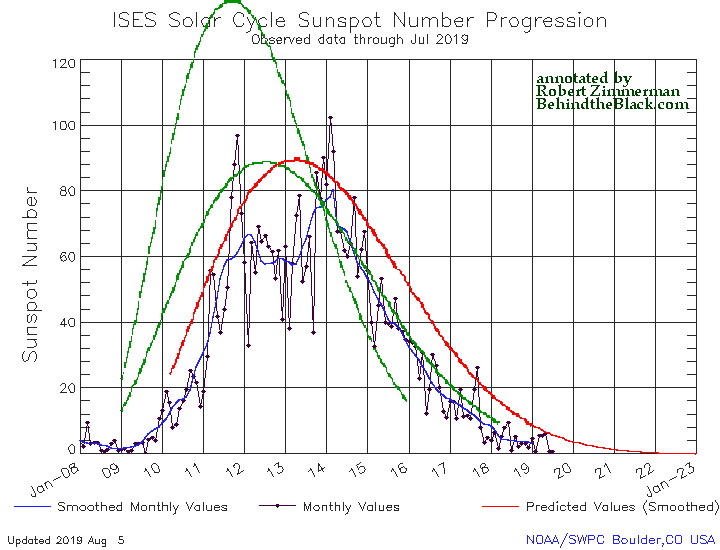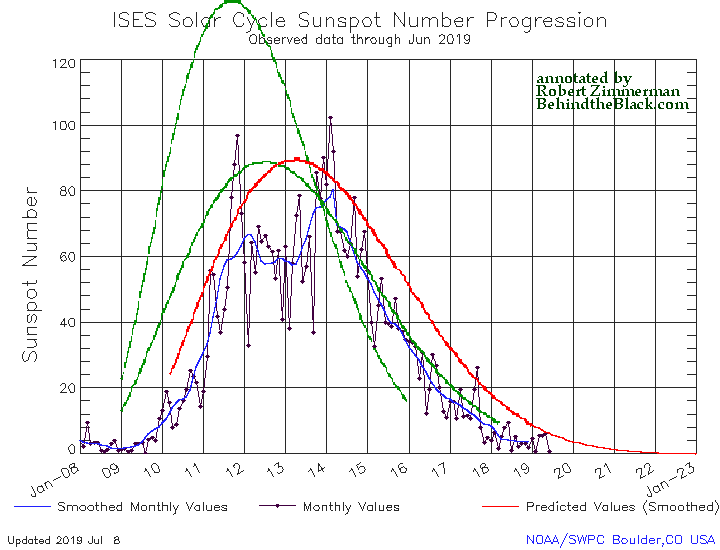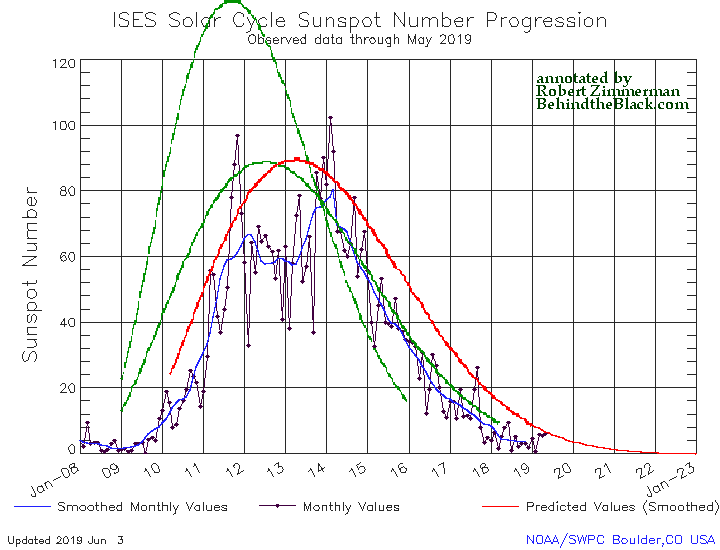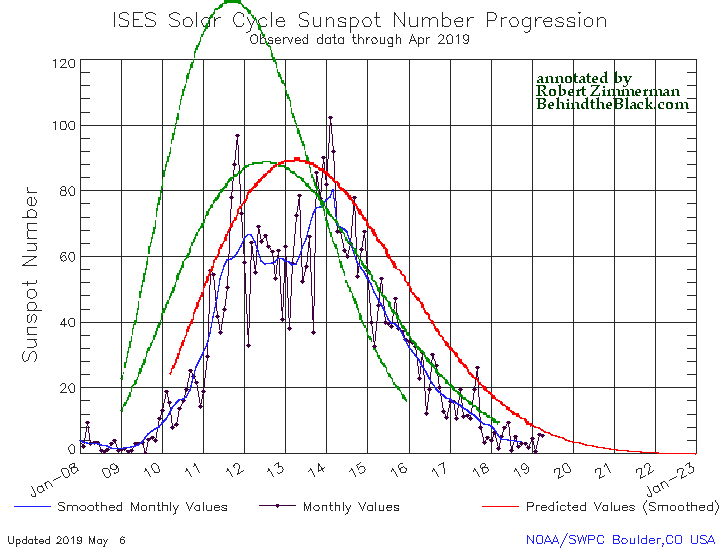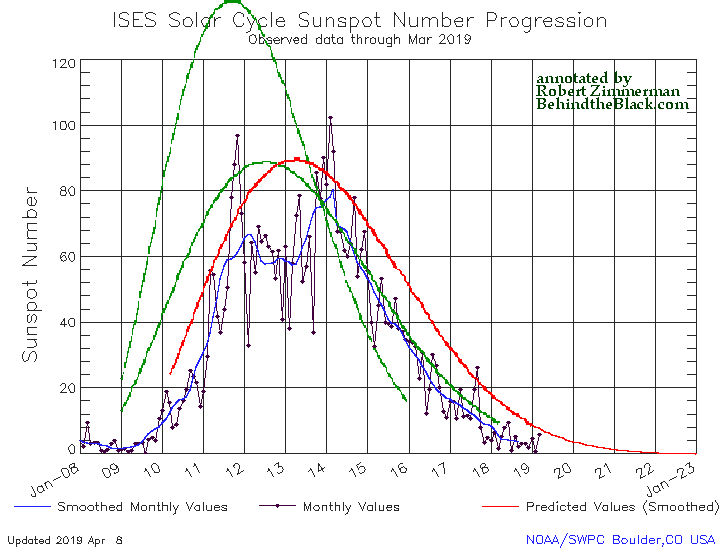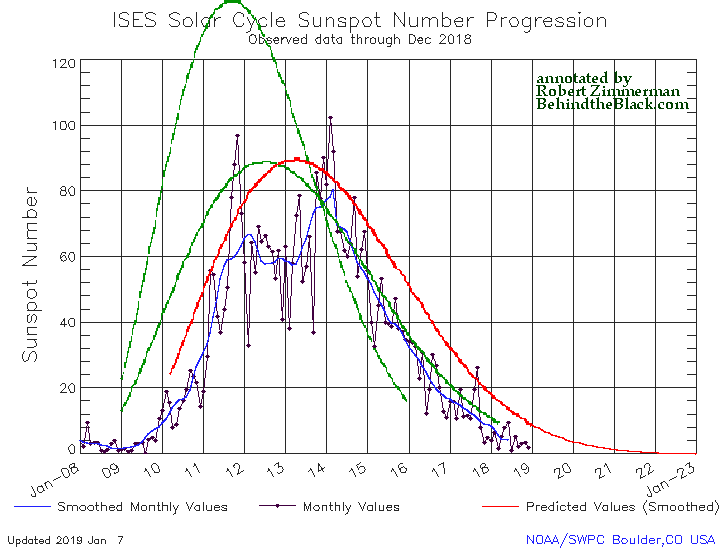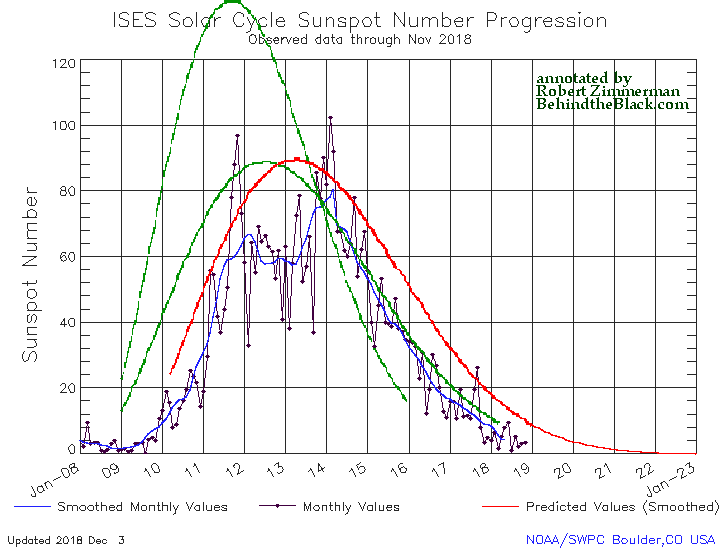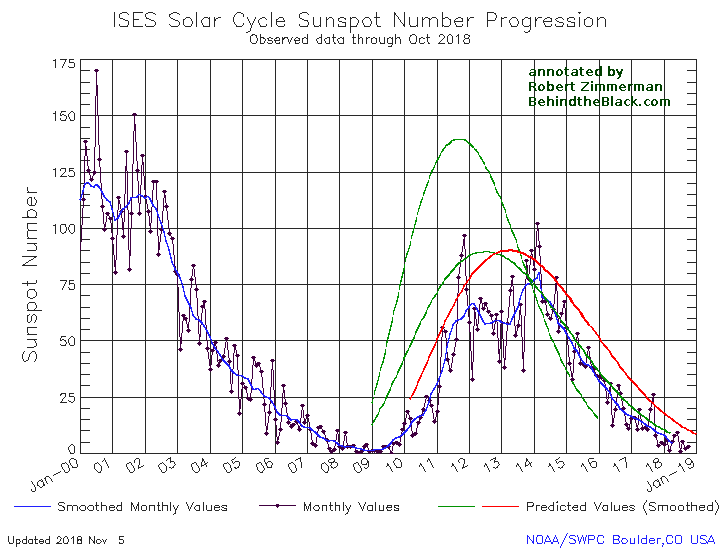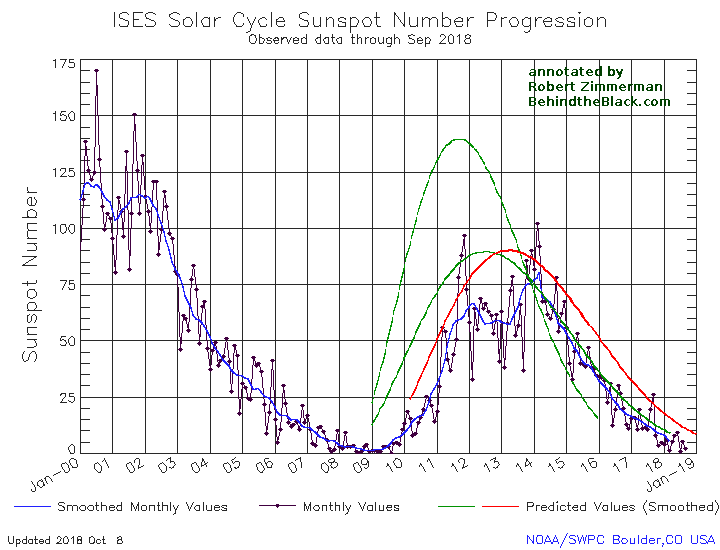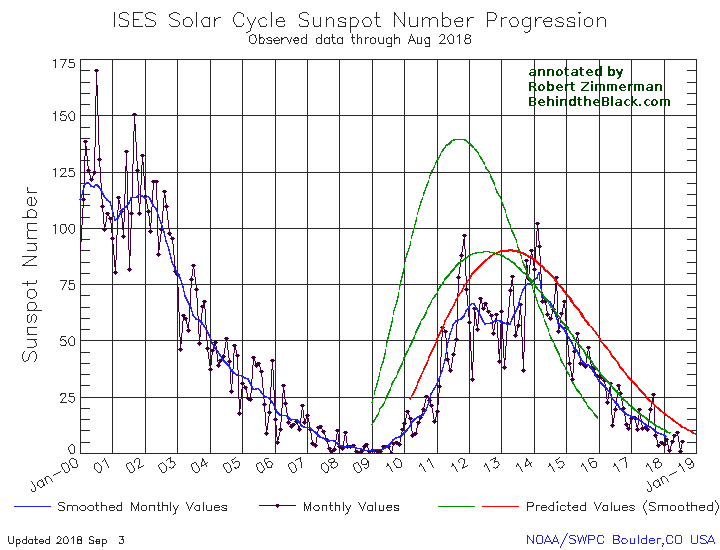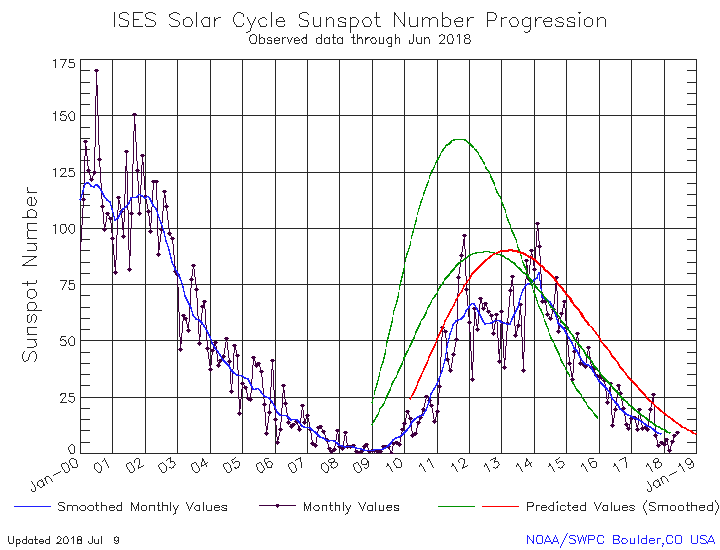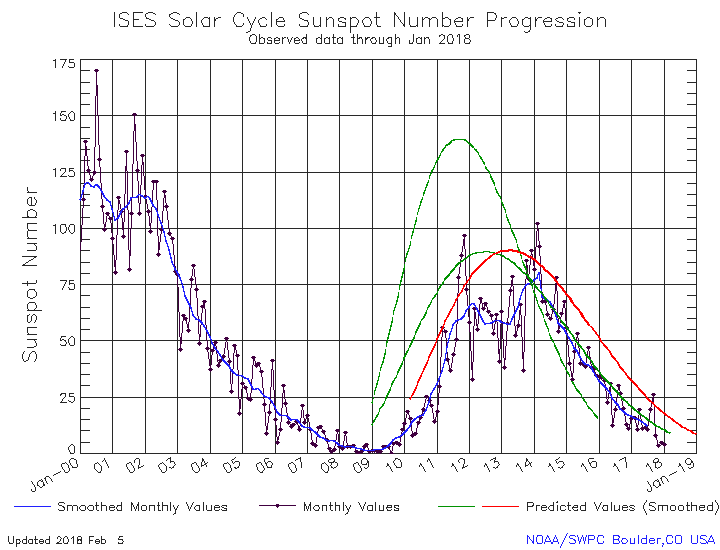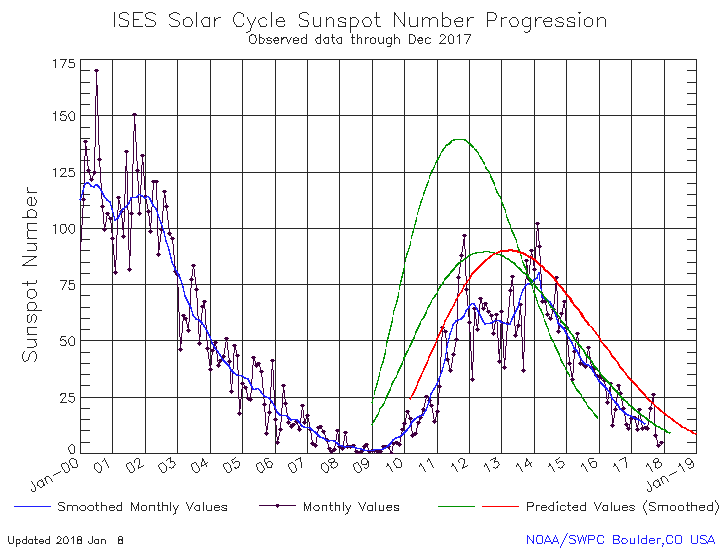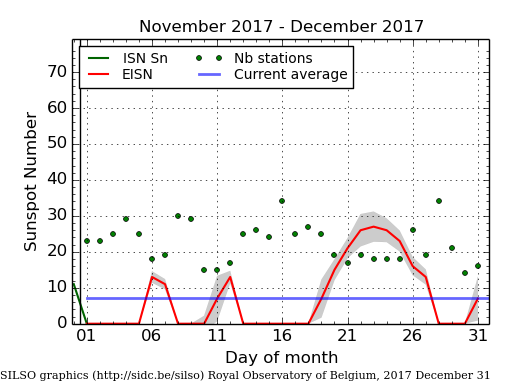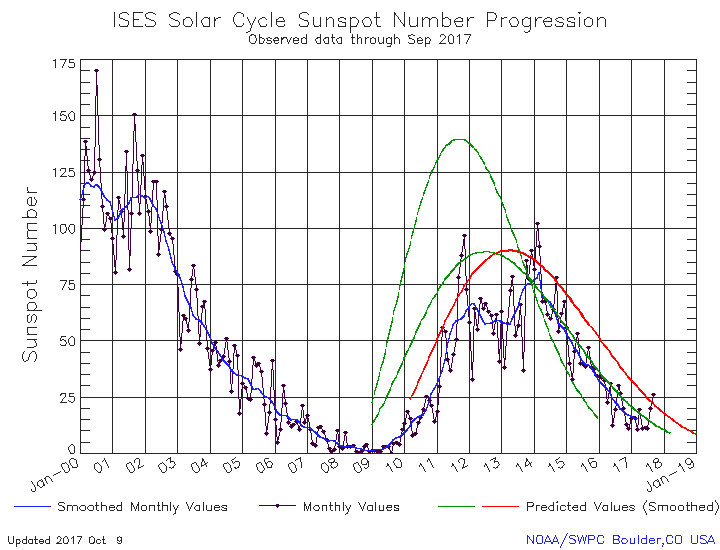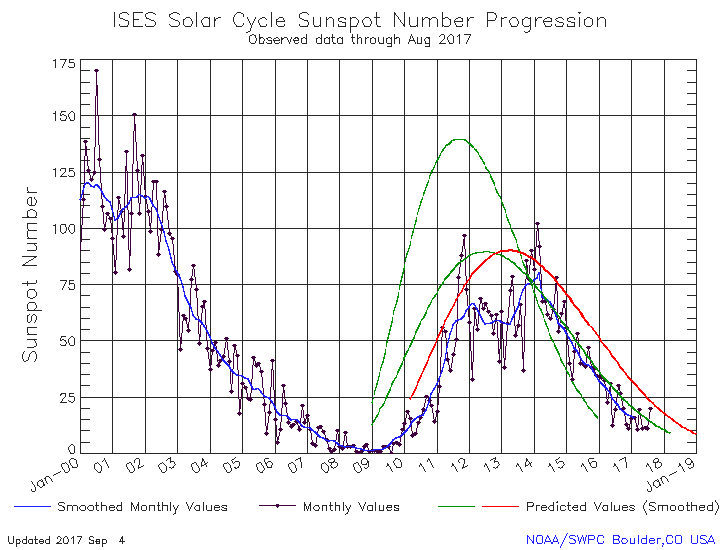Scientists look at and compare two past grand minimums
In a new paper just published by the American Geophysical Union (AGU), scientists have used tree ring data to analyze and compare the last two past grand minimums, dubbed the Spörer Minimum (1432–1578) and the more well known Maunder Minimum (1640–1720).
The link takes you to the full paper. It is very technical but what it essentially finds is that there appear to be some differences between the two, but more important, during the deepest part of both grand minimums all evidence of the 11 year sunspot cycle (dubbed the Scwabe cycle) vanishes.
A detailed comparison between the Spörer and Maunder (CE 1640–1720) minima shows that the Spörer Minimum is associated with enhanced Δ14C variability in a band centered around the 11‐year Schwabe cycle from CE 1450 to 1479 and between CE 1545 and 1578, whereas little 11‐year variability is observed from CE 1479 to 1539. In contrast, we only observe enhanced 11‐year variability after the end of the Maunder Minimum at CE 1722–1744, which could indicate that the nature and origin of the two minima were different.
In other words, from 1479 to 1539 (Spörer) and 1545 to 1722 (Maunder) the data suggests that we would not have seen sunspots, even with today’s superior observational capabilities.
They base this conclusion by looking at carbon-14 data, which reflects the arrival of cosmic rays on the Earth. When the sun is active cosmic rays decrease. When it is inactive, with no sunspots, cosmic rays increase. This data can be compared with known and more recent sunspot cycles, and can thus provide a robust baseline for determining what the Sun’s behavior was like before the era of the telescope.
In a new paper just published by the American Geophysical Union (AGU), scientists have used tree ring data to analyze and compare the last two past grand minimums, dubbed the Spörer Minimum (1432–1578) and the more well known Maunder Minimum (1640–1720).
The link takes you to the full paper. It is very technical but what it essentially finds is that there appear to be some differences between the two, but more important, during the deepest part of both grand minimums all evidence of the 11 year sunspot cycle (dubbed the Scwabe cycle) vanishes.
A detailed comparison between the Spörer and Maunder (CE 1640–1720) minima shows that the Spörer Minimum is associated with enhanced Δ14C variability in a band centered around the 11‐year Schwabe cycle from CE 1450 to 1479 and between CE 1545 and 1578, whereas little 11‐year variability is observed from CE 1479 to 1539. In contrast, we only observe enhanced 11‐year variability after the end of the Maunder Minimum at CE 1722–1744, which could indicate that the nature and origin of the two minima were different.
In other words, from 1479 to 1539 (Spörer) and 1545 to 1722 (Maunder) the data suggests that we would not have seen sunspots, even with today’s superior observational capabilities.
They base this conclusion by looking at carbon-14 data, which reflects the arrival of cosmic rays on the Earth. When the sun is active cosmic rays decrease. When it is inactive, with no sunspots, cosmic rays increase. This data can be compared with known and more recent sunspot cycles, and can thus provide a robust baseline for determining what the Sun’s behavior was like before the era of the telescope.

